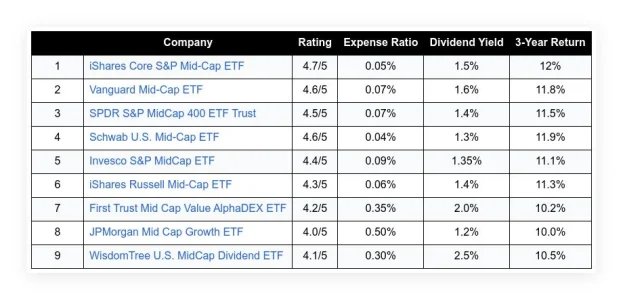A financial advisor provides guidance and money management services, and can help you understand your financial standing now, and envision growth toward a particular future. Today, software-based robo money advisors and human financial advisors can help you shepherd your investments. How do you learn what services are available to you so you can choose the right advice for your needs?
Table of Contents
ToggleEducate Yourself
The rules, conventions, and laws that apply to financial services can be complicated. Before you dive into investing, it’s important to learn some basic terminology that is relevant to the industry. You and your advisor are more likely to understand each other if you feel comfortable with core financial principles.
Recognizing industry-specific concepts and understanding what they mean helps you confidently make intelligent decisions as you develop a plan to meet your goals. Use online guides, blogs, forums, investment courses, and books to discover how investing can help you grow your wealth.
If, for instance, you search for articles about “investing for beginners” or “finance fundamentals” you should come across some terms like portfolio, risk, indexing, shares, mutual funds, asset classes, allocation, dividends, and instruments. Make a list of unknown terms and learn how they are used in the context of finance and personal investing.
Find out which asset categories financial planners work with. Learn to discern between facts and fluff so you can assess the quality and reputation of the advisors you encounter. Seek out reviews, testimonials, and recommendations, ask people you respect and trust about their own experiences.
Identify Your Current Position, Future Goals, and Personal Values
Take stock of where you are now– your financial plan for the future will be based on your age, income, and current portfolio of assets and tailored to complement your personal value system and risk tolerance. An advisor can help you decide if investing makes sense when you also have debt, like student loans.
If you can earn more from investing $100.00 than you would save by making an extra payment toward your loan, it may not make sense to pay off your loan early. Think about your future. Would you like to own a house in ten years?
Do you plan to have children? Where will you be in your career, and how much money will you be earning? Do you have 10, 20, 30, or 40 years for your money to grow? How much flexibility do you think you will need? How much will tax rates in your state affect growth?
Define what you want most. There may be a trade-off between ethically aligned investing and profitability. You may find opportunities to invest in socially conscious offerings, or you may want to designate a portion of your income toward riskier but potentially high yield assets like cryptocurrency.
You want to optimize your strategy to suit your personal values and real-life goals, your current income and assets, and your future returns at a particular time. Don’t forget to consider how you want to live as you move forward.
In your own conceptual version of a complex decision matrix, analysis can feel overwhelming. How do you weigh the variables? What are you willing to sacrifice in the short-term? Once you rank your priorities you’re on your way to finding your best advisory match.
Survey the Field of Human, Robo, and Hybrid Advice
What kind of financial advisor is right for you? Today there are a variety of human, algorithm-based, and hybrid options for financial management and planning. Your priority is to find competent, trustworthy, fiduciary guidance that puts your interests first.
Right now, the market for financial advice is quickly evolving and wide open. When you ask yourself, “Should I hire a human or a robo-advisor?” You may actually want the best from both worlds because they have complementary strengths.
In the past, most human financial advisors worked only for wealthy clients, and their services were inaccessible to many people. This changed when the first online robo-advisor launched in 2008, making financial services with low fees and minimal investment requirements available to everyone.
Robo-advisors quickly became popular and created a demand for financial services that could help people at all income levels grow their wealth. They have democratized the world of financial planning by competing with their human counterparts but are not necessarily a viable replacement for traditional services.
Robo-advisors cannot replicate the empathy, experience, and nuanced outlook that makes human advisors well-equipped to respond to life events and guard against personal vulnerabilities. Humans can dissuade clients from making impulsive decisions during a crisis or a market downturn, but also make informed adaptations when circumstances change.
They are good at keeping an eye on goals like college savings, large purchases, and mortgages. A human-managed portfolio can be tailored with exacting care and detail to your individual preferences, and a human advisor can discuss, work through, and help you come to a deeper understanding of your options and the potential outcomes of your choices. Meetings usually happen in an office, but some companies offer virtual consultations via phone or video.
Look online to see what’s available to you. If you have a modest income or less than $100,000.00 to invest, try searching for phrases like “financial advisors for beginners” or “financial advisors for people who make $50,000.” Familiarize yourself with the titles and acronyms fiduciary professionals use to distinguish themselves so that you can find the right help.
Credentials matter. Financial consultants, financial advisors, and wealth managers can help you manage your money, but they are not held to any particular licensing or fiduciary standard. Some advisors earn fees or commissions from products they sell. You want guidance from advisors who are bound by law or by stringent, long-standing professional standards to act in your best interest.
If your assets and income are limited, an Accredited Financial Counselor (AFC) could be the right guide when you start your journey. AFCs are ethically bound to fiduciary standards, but do not register with the SEC or state regulatory authorities.
They can help you become financially literate, eliminate debt, recognize opportunity and overcome obstacles toward meeting financial goals as you develop healthy and successful money management strategies.
When you have at least $100,000 to invest, you may be ready to enlist an Investment Advisor Representative (IAR.) These financial professionals work for a Registered Investment Advisor (RIA) enrolled with the Securities and Exchange Commission (SEC) or state regulators. RIAs are obligated to offer the lowest cost products to fit your needs and act in your best financial interest. They can handle complex estate planning and customized diversification. Board certified Certified Financial Planners (CFPs) also undergo years of training, coursework, and examination before they can register to provide investment advice and financial planning. Some, but not all fiduciary advisors carry multiple certifications at once. It never hurts to call a well-regarded advisor in your area. Even if they won’t take you on as a client, they may be able to point you in the right direction toward an alternative that’s right for your needs.
Robo-advisors are computerized fiduciary entities that register with the SEC or state regulatory authorities. These financial planning service platforms construct and manage your investment assets, and some also manage retirement accounts and trusts.
Generally, both human and robo-advisors operate according to the principles of modern portfolio theory to minimize risk for a desired rate of return. Humans create and program most robo-advisors for the long-term using a low turnover passive indexing strategy to optimize the growth of low-cost diversified assets.
Diversification lowers risk by allocating investments across a broad variety of asset classes and industry categories that will have variable responses to market shock.
Algorithms make automated calculations and decisions related to asset allocation, buying, and selling based on the system’s parameters, market conditions, and investor’s personal profile.
Scalability, speed, analytical capacity, and accuracy reduce labor costs and the potential for error, so robo-advisors can charge less for service than human advisors.
Robo-advisors are only as sophisticated as their programming, and because they are created for the masses, the options for personalization can be limited by the system’s configuration. They are not as flexible, customizable or responsive to inflation or recessions as a professionally managed portfolio.
Look at Feature Sets, Costs, and Fees
Platforms can be designed to service different investment sectors or interests, and each platform has a particular set of strengths. As you assess your options, you should review feature sets, fee structures, and minimum balances associated with each.
Keep in mind that a portfolio managed by a human advisor will have many similar attributes, but if you start your investment journey with a robo-advisor, you may take on more of the responsibility of evaluating candidates to determine your best match. Features include:
Exchange Traded Funds
Most robo-advisors invest heavily in ETFs– a basket of securities including stocks and commodities that is traded throughout the day on the stock exchange. As a bundled offering, ETFs can offer savings on commissions and fees.
Tax harvesting
Tax harvesting offsets tax liability and works like this: the robo-advisor will keep at least two ETFs for each class of assets. If the index fund (like a NASDAQ 100 ETF) loses value, the advisor will automatically sell and replace it with a different index fund. The capital loss from the sold security offsets the total capital gains tax liability.
Rebalancing
Asset allocation specifies an ideal target percentage for each kind of investment within the portfolio. For instance, you and your advisor may decide to have 25% to 35% of your portfolio consist of ETFs. When an asset category exceeds or dips below the specified range, the software rebalances the allocation to meet the original targets.
Impact Investing
Impact investing focuses on assets that support sustainability and consciously guided environmental, social, and governance (ESG) practices.
Direct Purchase Assets
As robo-advisors become more capable, there is an opportunity for including direct purchase assets like shares, mutual funds, and REITs that are more typically utilized by human advisors.
Cryptocurrency
Although cryptocurrency is speculative, with higher risk and volatility than traditional investments, many platforms include it as a portfolio option. – says Antreas koutis from Financer.com If you have disposable income and a high-risk tolerance, you may want to include cryptocurrency in your asset allocation.
Automated Planning
Robo-advisors implement financial planning to the degree that they consider and utilize user inputs within the context of their programming to achieve a specified target goal at some time in the future.
Access to Humans for Planning, Advice, and Customer Service
Human-monitored robo-advisors can respond more adequately to unexpected situations when customers want oversight, intervention, and mediation interaction. Humans can attend to idiosyncratic issues, finesse the diversification and risk-management strategies and let robots do the routine chores. Customers get the best features of human wisdom and robot efficiency
Audience-Focused Platforms
Some robo-advisors have feature sets that are especially appealing to particular demographics, like Millennials, professional women, or technology investors. Serving a particular niche can create a better experience for its members.
Active Management
Although most robo-advisors will follow a tried-and-true passive approach, they are not fail-safe. It is possible for computerized investing platforms to lose money under adverse conditions. Some robo-advisors are moving toward active management to beat the market or account for volatility.
Many of these platforms utilize AI to learn and adapt to changes to increase precision and efficiency to identify promising, median-volatility stocks (outside of an index) Others offer cryptocurrency as a speculative portfolio component. Active management becomes more appealing as platforms become more sensitive, flexible, and adept at responding to change.
Costs and Fees
Robo-advisors can be standalone platforms, or they may be run by established full-service brokers like Vanguard and Merrill Lynch. Many require no minimum balance; others require at least $1000 to $5000 or more to open and maintain the account. Hybrid services offered by traditional firms tend to require higher minimum investment and charge more in fees.
Credentialed human advisors typically charge between 1% and 2% of invested assets. Robo-advisor annual fees tend to range from 0.25% to 0.5% with some outliers (no minimum fee or 1.5%) a few may charge monthly fees or advisor fees or management fees monthly fees.
Fee-based consultants can bridge the wealth gap to enable investors to manage their financial planning at every stage of growth, but they can be relatively expensive up-front.
Drill Down and Dive In
Financial advice is never one-size-fits-all. Ultimately your choices will depend on your values and desires, appetite for risk, current assets, income, lifestyle, and available options given these variables. Look for the combination of minimal account fees, features, and human support that best optimizes your goals now and in the future. Find the most affordable advice that will have the greatest impact in the long term. Your strategy may change as your circumstances mature. Different levels of service will be appropriate at different stages of life, and no matter what kind of advice you choose, periodic check-ins will help you stay on-track for better or worse, you are the captain of your ship. Educate yourself, consider your options, and take your first shot at securing your financial future.













